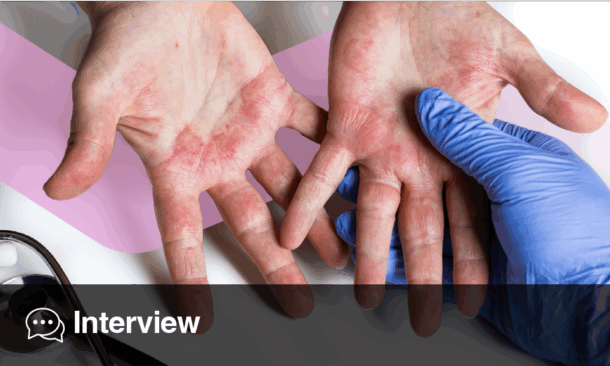INTRODUCTION
Acne vulgaris, commonly known as acne, is a skin disease caused by the blockage of hair follicles, high keratin and sebum production in hair follicles, and overgrowth of bacteria. It affects approximately 9.4% of the global population.1 Inflammation mainly occurs when the associated bacteria release enzymes for sebum degradation. Cutibacterium acnes is one of the main candidates associated with acne vulgaris. This bacterium is Gram-positive and a facultative anaerobe, meaning it can survive in the presence or absence of oxygen. The hair follicle environment, with limited oxygen, provides a suitable niche for the bacterium to inhabit. This bacterium releases propionic acid as a byproduct of sebum degradation. Acne formation is correlated with genetic, dietary, hormonal, psychological, and medication-related side effects.2 In severe cases, doctors prescribe antibiotics like doxycycline, minocycline, azithromycin, or sarecycline, as these antibiotics show strong antimicrobial activity against Cutibacterium acnes.3,4 Antibiotic medications are very effective against acne vulgaris. However, a large number of cases of antimicrobial resistance in acne have been reported. Therefore, there is a need for more effective alternatives for the treatment of acne.
BACTERIOPHAGE AGAINST CUTIBACTERIUM ACNES AND ITS CHARACTERISTICS
Bacteriophages are the acellular entities (viruses) that infect bacteria and kill them. Their basic characteristics include genetic material (either DNA or RNA, double- or single-stranded) covered by a capsid (protein coat). Indeed, viruses can also infect archaea. Bacteriophages mainly adopt two modes of infecting bacteria and are found everywhere. The lytic mode is characterised by the replication of bacteriophages inside the bacteria, which causes them to burst and release new virions. In the other mode, bacteriophages can reside inside the bacterium silently for a longer time and then start their replication, followed by the lytic mode.5 A bacteriophage might be developed as an alternative treatment against acne vulgaris. A very interesting bacteriophage named phage PA6 was reported in the literature in 2007.6 After many trials, researchers concluded that phage PA6 has a lytic reproductive cycle on the basis of the first genome sequencing.7,8 This conclusion was based on the absence of genes for integrase and repressor.9
Host specificity is a very important characteristic and can play a role in developing bacteriophage-based solutions. Host specificity ensures that the bacteriophage only targets the targeted bacterium. A narrow range of hosts can effectively reduce the chances of inducing resistance in the non-targeted bacterial species. The conditions of the hair follicle are not very supportive of the growth of microbial species due to the effects of pH, temperature and nutrient availability, antimicrobial peptides, cytokines, chemokines, and proteases. Cutibacterium acnes has adapted to the microbiome of the hair follicle very well by exhibiting high lipolytic, biofilm, and pH regulatory mechanisms. Because of these reasons, the diversity of Cutibacterium acnes is very low.6 The low diversity of Cutibacterium acnes is the reason that the phage would evolve with a very narrow host range.
CHALLENGES IN THE DEVELOPMENT OF PHAGE-BASED TREATMENT
This paper mentions some challenges in developing bacteriophage-based therapy for curing acne, as the microbiome of hair follicles is different from and much more complex than that of the outer skin. This makes it very difficult for the phage PA6 to get access to the bacteria residing in the follicle through an outer, antiseptic-like application. Another issue is the presence of biofilm. Cutibacterium and other bacteria generally show resistance to many antimicrobial agents. Therefore, this must pose a problem for the phage PA6 in acting on the Cutibacterium acnes present in the biofilm. As mentioned above, the diversity within Cutibacterium acnes is very low. As a result, the diversity of phages targeting Cutibacterium acnes is also very low. Therefore, this homogeneity might cause confusion and contradictions in the identification, characterisation, and other characteristics of the phage PA6.
ROLE OF PHAGE THERAPY IN CONTROLLING DERMATOLOGICAL INFECTIONS AND ITS FUTURE APPLICATIONS
Various successful results for the treatment of dermatological infections have already been reported in the literature. For example, a study was conducted on 143 patients affected by purulent skin infections caused by Staphylococcus aureus. Phage was introduced directly at the site of the wound and surrounding tissue using an injection. As a result, 75.0% of the patients recovered successfully, improvement was reported in 7.7%, and only 4.9% of patients experienced no effect.10 Similarly, another study was conducted on 55 patients with furunculosis caused by Staphylococcus. The phage was introduced orally, and a very effective result was obtained.11 Unfortunately, phage therapy is still under trial and needs improvements to become a successful treatment option. If researchers are successful in overcoming the above-mentioned challenges, phage therapy has the potential to become one of the fastest-growing healthcare products. Indeed, it can act as a potential preservative against food-spoiling microbes and as an antibacterial agent for the cosmetic industry.
CONCLUSION
Bacteriophage is a bacterial targeting acellular entity with some of the key characteristics like a lytic reproductive life cycle and target host specificity. These characteristics of the phage can be utilised to develop treatments against acne vulgaris. Acne vulgaris is a skin disease caused by the excessive growth of Cutibacterium acnes. Phage PA6 is a phage isolated from the Cutibacterium acnes infection. This phage can be used to treat acne vulgaris by inhibiting the responsible bacterial growth, although there are some challenges, like a high level of homogeneity, limited in vivo host accessibility, and reduced action on the bacterium in the presence of biofilm.






